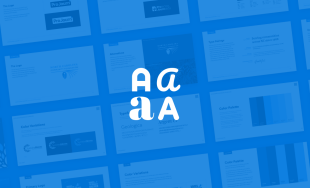Getting Started with Inbound Links
Inbound links, often referred to as “the currency of the web,” are simply links from another source that point to your site. Just as with currency, they are exchanged and carry a value, particularly in regards to search engines and how they rank your site in search results. On a basic level, the more quality inbound links your site has, the higher you’ll rank in search results for particular terms or topics.
For example, if in this article I link to another source to further explain a particular point, I’m identifying that site as providing good information on that particular topic. The search engines see this, and it boosts the credibility for that site based on my link-based “recommendation.”
All links are not created equal and those coming from highly credible sites carry extra weight. That said, don’t overlook links from smaller sites, which can still be very helpful.
Current Landscape

Before you start searching for inbound links, first take a look at where you currently stand. Besides providing insight into what’s already working for you, it will help you decide where to spend your time (and where not to).
There are a number of ways to find your inbound links. Two of the easiest are through your Google Analytics stats or using an online tool like Site Explorer or Open Site Explorer. If using Google Analytics, go to Traffic Sources and then look under Referring Sites. Widen your time period to six months or a year get a more comprehensive view and increase the number of rows shown for a full list.
On Site Explorer and other similar tools, you’ll notice links marked as “nofollow.” This means there is an active link pointing to your site, but that it doesn’t carry any weight in the eyes of search engines. These nofollow links can still drive traffic to your site when people click on them, so they do have some value, but not the kind that will help your search rankings. Examples of places you may commonly find nofollow links are in blog comments, where the site owner is allowing you to include a link along with your comment, but he’s not “vouching” for that link, since it’s often not moderated or reviewed before being included.
Inbound Link Sources
Where should you look for these inbound links? I’ve compiled some possible sources below.
Create Good Content
Nothing will serve you better when it comes to inbound links, and many other areas of your site, than creating good content. Writing an insightful blog post or creating a useful template or presentation will not only lead people to link to your site, but also drive traffic and build equity in your site and brand.
- Example: PR2020's Inbound Marketing Gameplan, http://www.pr2020.com/page/how-to-build-your-inbound-marketing-gameplan
Guest Article or Blog Post
Along with creating great content for your own site, consider writing a guest article for another publication. These types of arrangements will usually allow you a brief bio line and a link back to your site. For example:
Directories
Directories can be a great inbound link source, but it all depends on finding the right ones. Many directories require a paid listing and others may use the nofollow tag discussed earlier. With the exception of a site like http://www.dmoz.org, I would spend less time looking at large directories and would instead focus on local/industry-specific options if available.
Online News Release and Article Sites
As with directories, posting your news releases or articles online can be a nice link source, but again, it’s all about finding the right ones.
- Example: ncheadlines.com
Vendors/Suppliers
These people or groups have a vested interest in helping you succeed. Explain to them that you’re trying to increase your exposure on the web and that this will in turn help them as well.
- Example: A local coffee shop requesting a link on their coffee supplier’s website, perhaps in a “where to find our coffee” section of the site. The same shop could also trade links with the local bakery that provides the baked goods they sell.
Business Allies
Business allies can include any type of business partner that you’ve worked or networked with that isn’t a direct competitor.
- Example: A freelance copywriter trading links with a designer after collaborating on a project.
Sponsorships / Charities / Associations
If you serve on a Board, have made a significant contribution to a charity or are a member of an association, these groups are looking for ways to thank you and provide value in return -- especially if it doesn’t cost them any money.
- Example: http://www.cednc.org/content/services+directory/10596
- Example: http://www.vtknowledgeworks.com/ (see left-hand sidebar)
If you feel weird reaching out to people about linking to your site -- you shouldn’t. At least not if you’re doing it right. In most of these situations you’re dealing with trusted relationships, so spend a few minutes and write a short, personal email -- leave the jargon out and be clear and upfront about your goals.




Comments
Jonathan
Thanks for sharing, Tammy. Great example of what not to do!Tammy Keller
A nice article about overdoing link building (paid links, black hat stuff, etc..) :http://searchengineland.com/new-york-times-exposes-j-c-penney-link-scheme-that-causes-plummeting-rankings-in-google-64529
Leave a comment